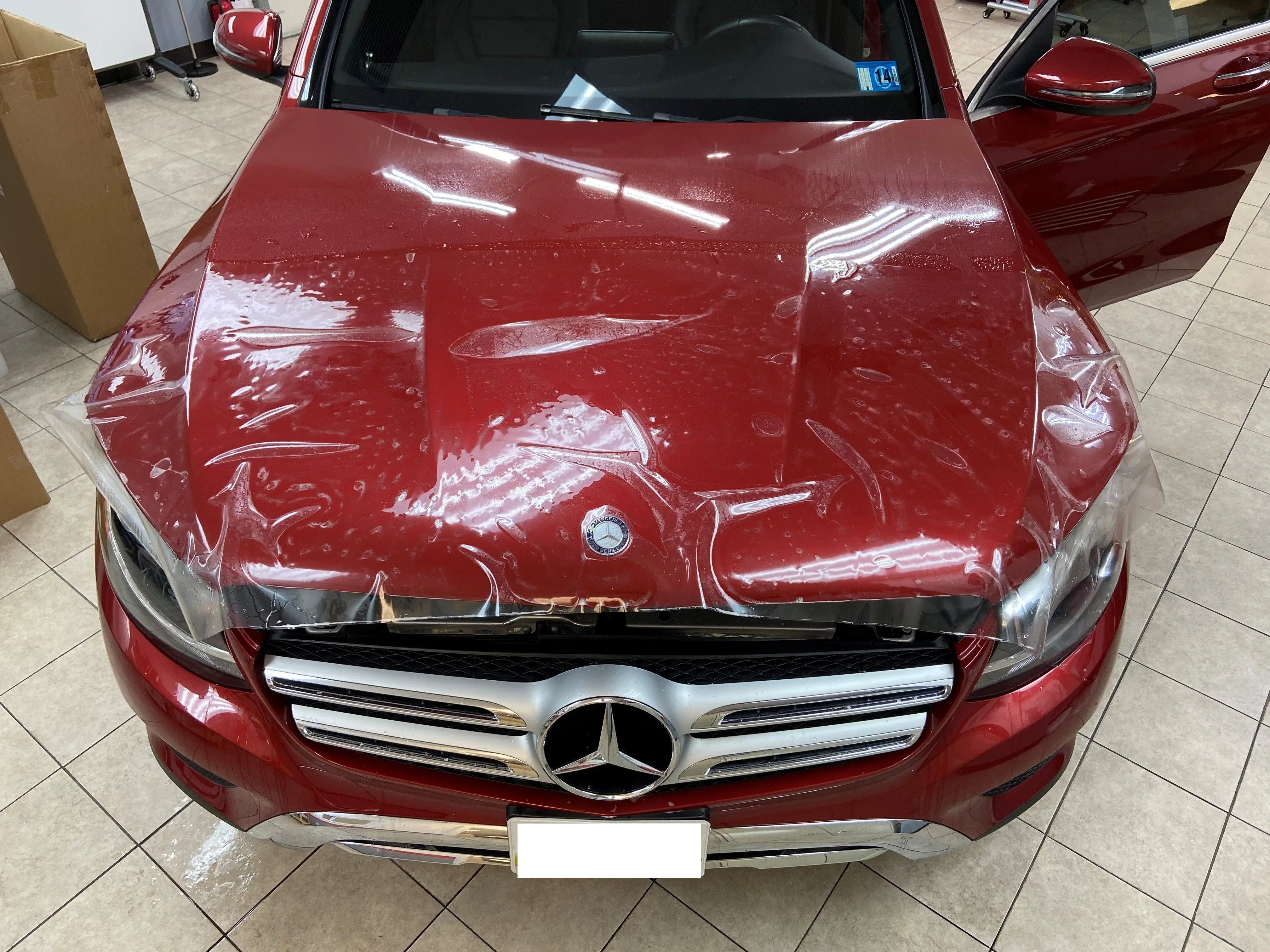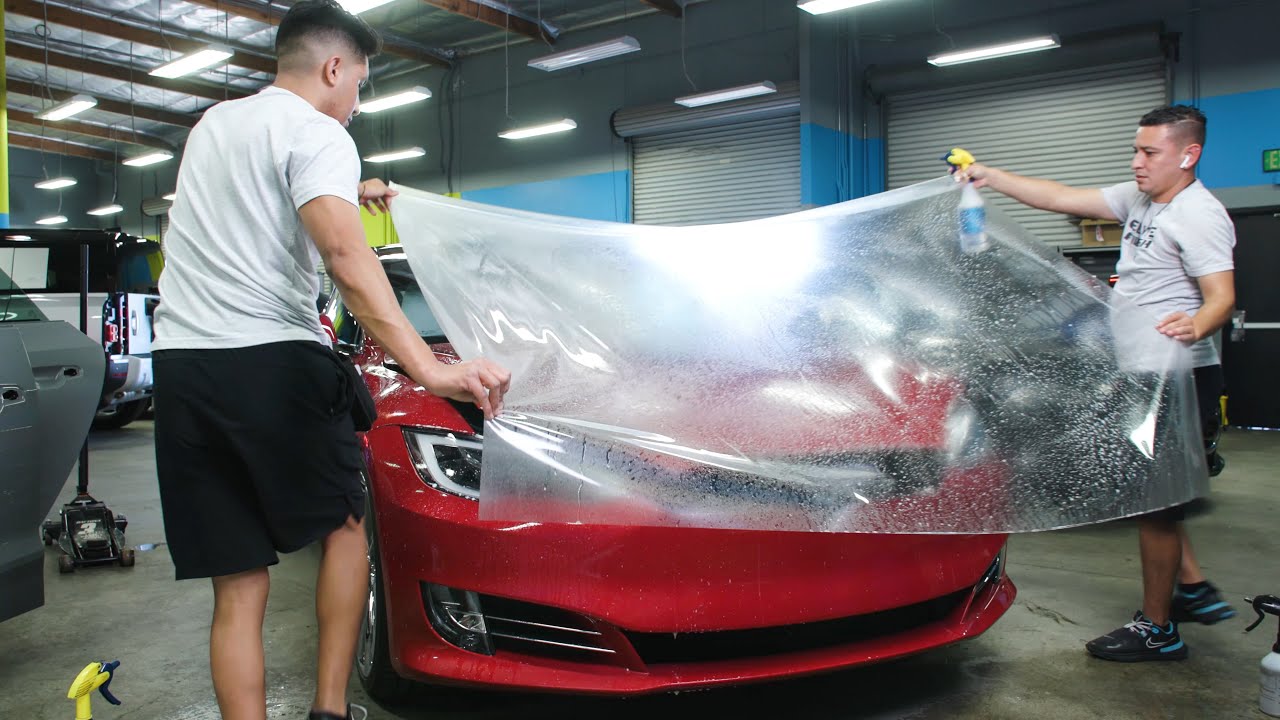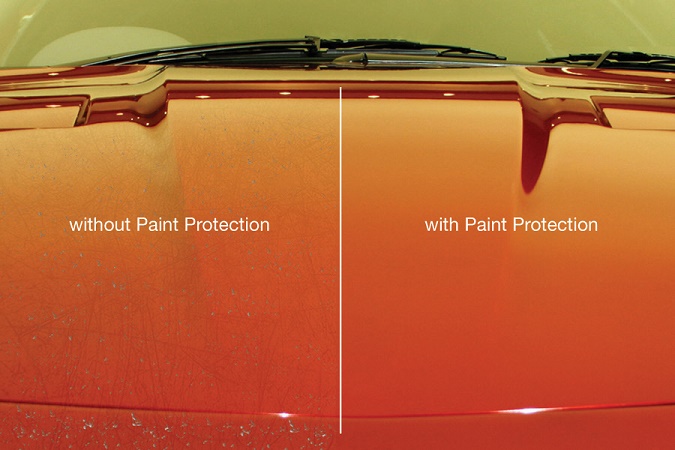Everything About Paint Protection Film: Recognizing Its Vital Function in Automobile Treatment
Paint Protection Film (PPF) has ended up being a necessary facet of automobile care in recent times. This clear guard offers to protect a vehicle's exterior from typical dangers such as scratches and ecological damages. Recognizing the technicians behind PPF and its different benefits is crucial for vehicle owners. However, several continue to be not aware of the various kinds offered and the installation process included. What elements should one take into consideration before applying PPF to their lorry?

What Is Paint Protection Film?
Paint protection film (PPF) is a clear, resilient layer made to shield a lorry's paint from damages. This sophisticated product, commonly made from polyurethane, is engineered to resist scratches, chips, and contaminants, making certain the vehicle preserves its aesthetic allure with time. PPF can be related to different surface areas, consisting of the hood, fenders, and bumpers, offering targeted protection where it is most needed.The film is not just resistant to damage yet also provides a self-healing home; small scrapes can go away with exposure to warmth. Furthermore, PPF works with various automobile finishes and can be tailored with respect to density and gloss degrees. Its application has actually become progressively prominent amongst automobile lovers and day-to-day vehicle drivers alike, as it maintains the car's worth and appearance. By buying paint protection film, proprietors can appreciate an excellent exterior while decreasing upkeep efforts.
Just How Does Paint Protection Film Job?
Paint protection film functions by creating a sturdy obstacle that safeguards surfaces from the ground up and other physical damages. Additionally, it provides shielding versus harmful UV rays, which can fade and degrade paint over time. Numerous modern films additionally include self-healing modern technology, permitting small abrasions to vanish with heat direct exposure.
Protection From Scratches
Shielding a car's outside from square one is a critical issue for numerous proprietors, and paint protection film (PPF) provides a reliable service. This clear, polycarbonate urethane film is created to comply with the car's surface area, creating an obstacle that soaks up impacts from roadway debris, branches, and other possible hazards. The film's flexibility enables it to extend and satisfy different forms, making it suitable for various car models. SpeedEFX Clear bra Centennial. Additionally, PPF is self-healing; small scrapes can go away with warm direct exposure, maintaining the vehicle's appearance. By acting as a durable shield, paint protection film efficiently minimizes the threat of unpleasant imperfections, maintaining the visual integrity and resale value of the lorry for years ahead
UV Ray Shielding
A vehicle's exterior encounters numerous hazards, consisting of harmful UV rays that can fade paint and deteriorate surface areas over time. Paint protection film (PPF) acts as a powerful obstacle against these unsafe ultraviolet rays. Made from advanced polymer materials, PPF blocks a considerable percentage of UV radiation, preventing it from permeating the car's clear coat and paint layers. This shielding impact not just maintains the lorry's color and finish however additionally extends the lifespan of the paint. By properly taking in and mirroring UV radiation, paint protection film lessens the threat of oxidation and staining. Vehicle proprietors who invest in PPF can enjoy improved looks and enhanced resale worth, knowing their automobile is safeguarded versus the adverse impacts of sun exposure.
Self-Healing Innovation

Benefits of Paint Protection Film
Paint Protection Film (PPF) offers numerous benefits for automobile owners seeking to preserve their auto's look and value. Among the main advantages is its ability to secure the automobile's paint from the ground up, chips, and ecological pollutants. This layer of protection helps preserve the manufacturing facility finish, avoiding costly painting or detailing. In addition, PPF is immune to UV rays, which can cause fading with time, thus keeping the automobile's aesthetic appeal.Another significant advantage is the film's self-healing buildings; small scrapes can vanish with heat direct exposure, making certain the vehicle continues to be visually immaculate. PPF is also simple to maintain, needing only routine washing to keep it looking fresh. Moreover, applying paint protection film can improve resale worth by demonstrating that the lorry has actually been well looked after. Overall, PPF is a sensible investment for those devoted to preserving their automobile's condition and extending its life-span.
Different Kinds of Paint Protection Film
Different kinds of Paint Protection Film (PPF) deal with different needs and choices amongst lorry owners. Clear bra films are among one of the most prominent choices, giving a transparent layer that secures the car's paint without modifying its look. These films are suitable for those who want to keep the initial appearance of their auto while securing it from square one and roadway debris.Another type is self-healing film, which includes an unique polymer that can fix small scrapes and swirl marks when revealed to warm. This type offers improved longevity and visual appeal. Furthermore, colored PPF is readily available for those seeking to tailor the appearance of their lorry, permitting for a distinct surface while still supplying protection.Lastly, distinctive films are made for particular surfaces, such as matte surfaces, making certain that the protective top qualities do not jeopardize the car's style. Each kind of PPF offers distinctive objectives, improving both protection and customization.
Setup Refine for Paint Protection Film
The installation procedure for paint protection film begins with careful surface preparation to assure excellent bond. This includes cleansing, polishing, and potentially remedying the lorry's paint to get rid of any kind of blemishes. Adhering to prep work, various application methods are employed to properly apply the film without bubbles or folds.
Surface Preparation Tips
Prior to using paint protection film, careful surface area preparation is essential to ensure perfect adhesion and durability of the film. This procedure begins with an extensive cleansing of the lorry's surface area to remove dirt, grime, and pollutants. A top quality vehicle soap must be used, followed by washing and drying out with a microfiber towel to avoid scrapes. Next off, any kind of existing wax or sealers should be removed, often utilizing an isopropyl alcohol service to ensure a totally bare surface area. Examining for flaws such as scrapes or swirl marks is vital, as these can impact the film's appearance and performance. Finally, mindful masking of surrounding locations assists secure them during the setup procedure, assuring a clean and exact application.

Application Methods Discussed
Grasping the application strategies for paint protection film is crucial for achieving a remarkable finish. The setup procedure begins with mindful positioning of the film on the vehicle's surface area, making sure accurate placement over the designated location. Once placed, a service of water and soap is typically utilized to assist in repositioning and bubble elimination. Smooth, regulated pressure is applied using a squeegee, beginning from the center and working outside to eliminate air pockets. Heat might be applied with a warm weapon to improve attachment and aid in contouring around contours and sides. After cutting excess film, the edges are sealed to avoid lifting. Correct technique and attention to detail during installment eventually improve the film's resilience and visual allure.
Maintenance and Care for Paint Protection Film
Correct maintenance and care are essential for ensuring the durability and performance of paint protection film. Routine cleaning is essential; it is suggested to clean the vehicle with a pH-balanced, non-abrasive soap to avoid any kind of damage to the film. Making use of soft microfiber cloths for drying out will certainly help avoid scratches.Avoiding check here automatic cars and truck cleans with brushes is advisable, as these can raise the edges of the film. In addition, it is very important to without delay eliminate impurities such as bird droppings, tree sap, and road tar, as they can deteriorate the film over time.For suitable protection, waxing the film every few months can boost its luster and sturdiness, yet treatment must be taken to use waxes that are secure for clear films. Regular assessments for any indications of training or gurgling should also be carried out, permitting timely repairs to preserve the integrity of the protection.
Frequently Asked Inquiries
The Length Of Time Does Paint Protection Film Usually Last?
The long life of paint protection film usually ranges between 5 to 10 years. Elements affecting its life expectancy consist of ecological problems, maintenance methods, and the high quality of the film applied, influencing general performance in safeguarding the car's surface area.
Can Paint Protection Film Be Gotten Rid Of Without Harming the Paint?
Eliminating paint protection film can be done safely, generally without harming the underlying paint. Effective removal depends on the film's age, application technique, and the surface problem, calling for cautious method to ensure paint integrity.
Is Paint Protection Film Visible Once Set Up?
When installed correctly, paint protection film is developed to be virtually invisible. SpeedEFX Clear bra Centennial. However, some individuals may see a small shine or appearance difference, depending upon the vehicle's paint and the film's top quality
Does Paint Protection Film Protect Versus UV Rays?
The inquiry of whether paint protection film safeguards against UV rays arises often. This film is designed to shield the vehicle's paint from unsafe ultraviolet radiation, assisting keep the automobile's look over time.
Will Paint Protection Film Impact My Lorry's Resale Value?
The impact of paint protection film on an automobile's resale value can be favorable, as it protects the paint's problem. Possible buyers may have varying opinions regarding its presence, affecting total marketability and perceived value.